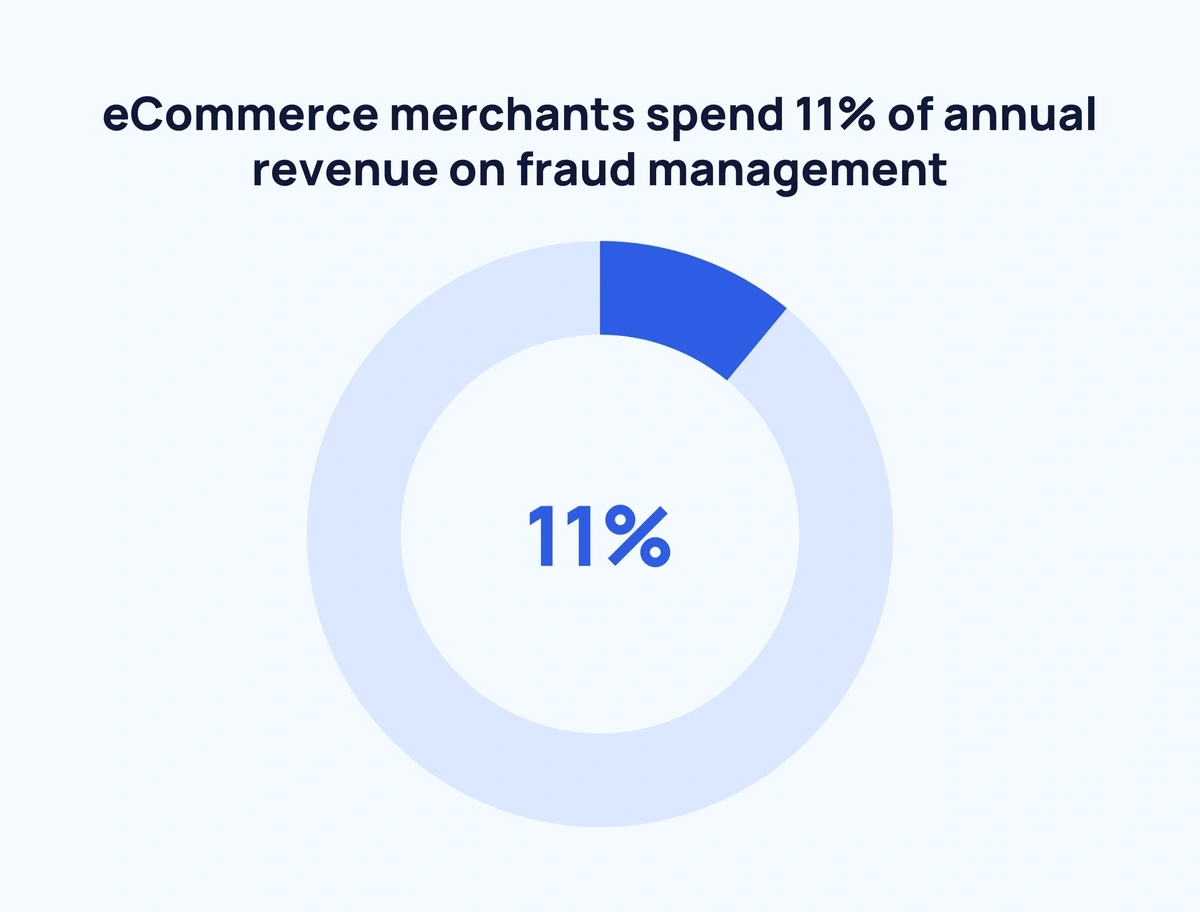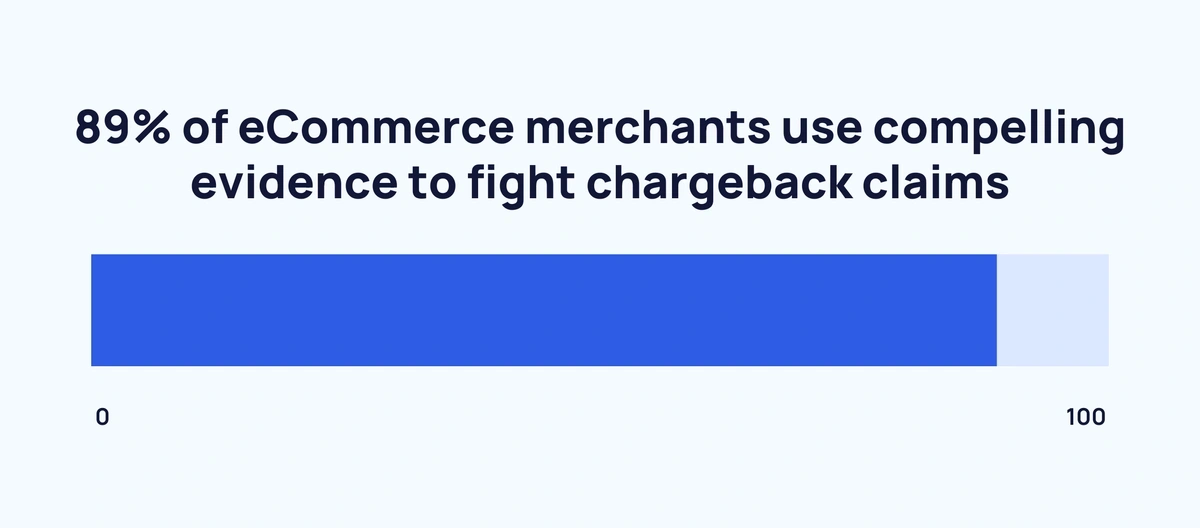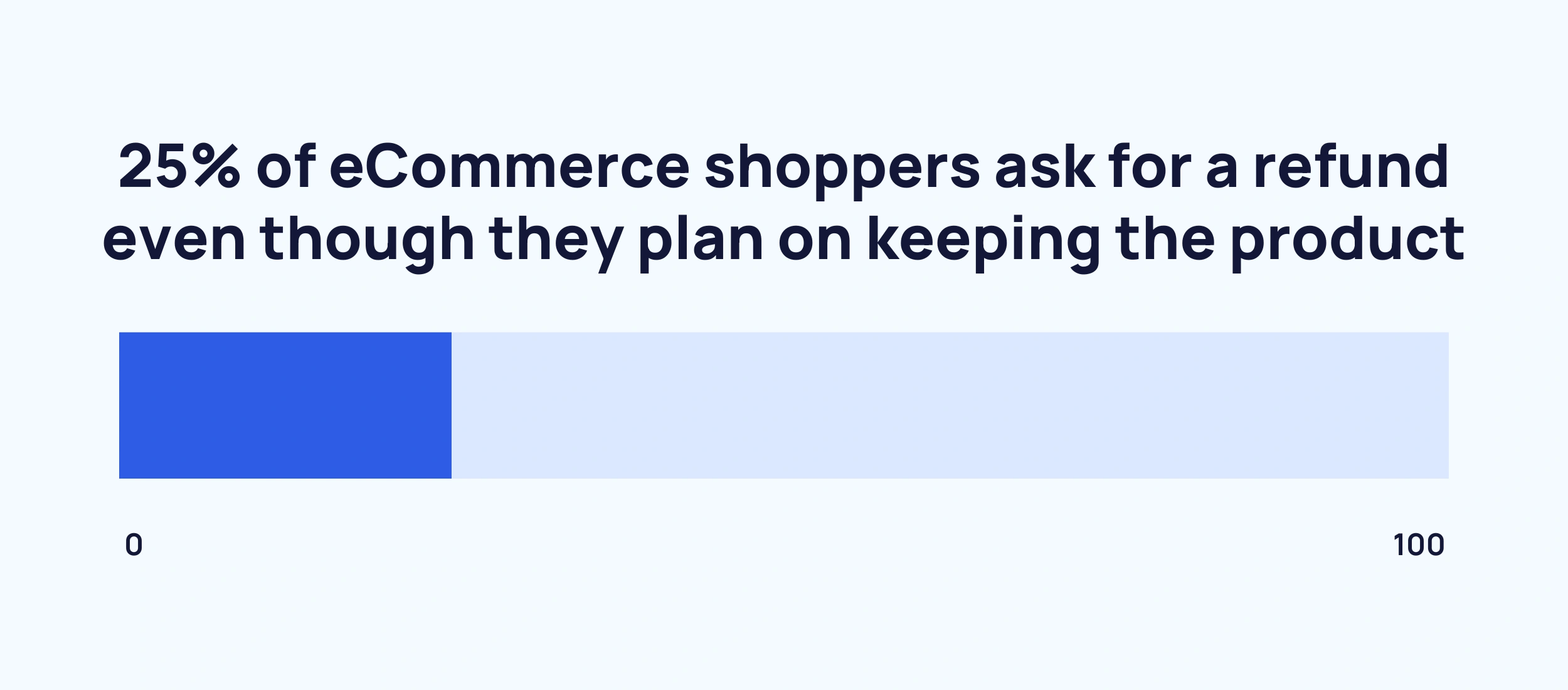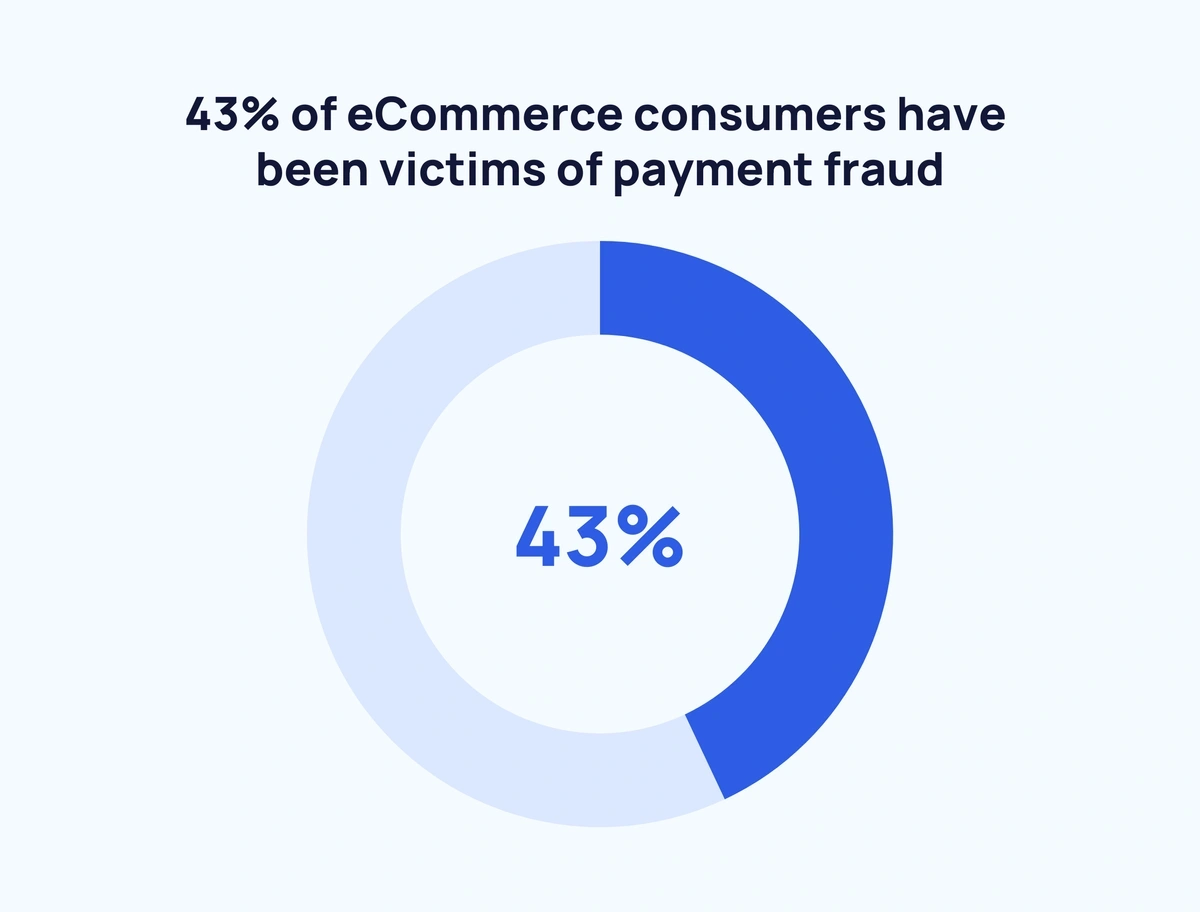
23+ eCommerce Fraud Statistics (2024)
With 85% of global consumers shopping online, eCommerce companies are collectively generating trillions of dollars each year. But that jump in online shopping comes with an increased risk of fraudulent behavior.
eCommerce fraud manifests itself in many ways. Account takeovers involve hackers stealing login credentials and shopping using someone else’s account. “Friendly fraud” involves customers taking advantage of promotions and return policies to receive free or discounted products.
In response, eCommerce companies invest more and more money into fighting and preventing fraudulent transactions. And as new technology leads to more sophisticated attacks, merchants need to stay agile to prevent fraud and protect their margins.
What is the state of eCommerce fraud in 2024? Keep reading to find out.
Top eCommerce Fraud Statistics
Before reading the full report, check out a few of the more notable eCommerce fraud statistics:
- eCommerce companies are estimated to lose $48 billion to fraud each year.
- Every $100 in fraudulent orders results in $207 in losses to the business.
- The average eCommerce company uses 5 fraud detection tools.
- 25% of eCommerce shoppers ask for a refund even though they plan on keeping the product.
- 75% of eCommerce businesses plan to increase their fraud prevention budget.
- 43% of eCommerce consumers have been victims of payment fraud.
eCommerce Fraud Financial and Market Statistics
The eCommerce industry loses billions of dollars every year to fraud. In fact, they lose far more than the cost of a sale in a fraudulent order. Shipping costs, chargebacks, and processing fees all add to the cost of dealing with eCommerce fraud.
On average, eCommerce businesses lose approximately $48 billion to fraud annually (Juniper Research)
The past year has seen a 16% jump in global losses from eCommerce fraud. One key reason for that increase is new forms of payment. The adoption of payment methods like Buy Now Pay Later has created new opportunities for fraud.
The global eCommerce fraud detection and prevention market is worth an estimated $57.51 billion (360i Research)
The eCommerce fraud detection and prevention market is poised for rapid growth over the next few years.
The market was valued at $36.65 billion in 2021 and $40.15 billion in 2022. As of 2024, it was estimated to be valued at $57.51 billion.
By 2030, the market could be worth $186.82 billion, in line with a 21.45% CAGR.
eCommerce companies lost 2.9% of global revenue to fraud last year (Cybersource)
That’s actually an improvement — companies lost 3.6% of global revenue in the previous year. In fact, 2022 marked an overall reduction in eCommerce fraud across several categories:
- eCommerce merchants lost 3.0% of revenue to fraud for domestic orders, compared to 3.4% the previous year.
- 2.6% of domestic eCommerce orders in 2022 were fraudulent, compared to 3.1% of orders in 2021.
- 3.0% of international eCommerce orders in 2022 were fraudulent, compared to 3.4% of orders in 2021.
On average, eCommerce merchants spend 11% of yearly revenue on fraud management (Cybersource)
Fraud management eats around one-tenth of revenue for most eCommerce companies.
By region, North American and European companies spend an average of 10% of total revenue on fraud management. Merchants in APAC countries spend 15%. Latin American companies spend an average of 19% of revenue managing fraud.
By company size, small businesses and enterprise merchants spend 12% of revenue on fraud management, compared to 10% of revenue for mid-sized companies.
Every $100 in fraudulent orders results in $207 in losses (Signifyd)
Signifyd analyzed the average cost of eCommerce fraud in 2023 and found that merchants lose $207 for every $100 in fraudulent orders. Those losses include wholesale costs, shipping and fulfillment costs, along with chargeback and processing fees.
eCommerce Fraud Activity Statistics
One reason it’s so hard to fight eCommerce fraud is that there are so many different types of fraud to fight. From payment fraud and phishing attacks to friendly fraud and policy abuse, here are the latest stats on different forms of eCommerce fraud.
eCommerce merchants accept 4.6 forms of payment on average (Cybersource)
There are now a dozen or more ways for eCommerce brands to accept payments. And the average merchant has added an average of 2.2 payment methods over the past 12 months.
Around two-thirds (66-67%) of eCommerce merchants accept bank transfers, direct debit, digital wallets, and credit cards.
Less commonly accepted forms of payment include Buy Now Pay Later (36%), cryptocurrency (19%), and network tokens (8%).
Phishing is the most common form of eCommerce fraud (Cybersource)
Phishing (along with pharming and whaling) ranked as the top form of eCommerce fraud in 2022, affecting 43% of global eCommerce merchants.
First-party misuse — also known as “friendly fraud” or chargeback fraud — was the 2nd most common form of fraud in 2022, affecting 34% of global eCommerce merchants.
Rounding out the top 5 forms of fraud are card testing (33%), identity theft (33%), and coupon, discount, or refund abuse (30%).
18% of all eCommerce fraud disputes can be attributed to first-party misuse or “friendly fraud” (Cybersource)
eCommerce merchants spend an average of $35 in fraud management for every $100 in friendly fraud disputes.
Friendly fraud involves customers disputing credit or debit card charges with their financial institution.
While some chargebacks are the result of confusion, mistakes, or dissatisfaction on the customer’s part, 58% of eCommerce merchants believe that attempting to obtain free products is a key driver behind friendly fraud.
Collectibles and luxury goods saw the largest increases in eCommerce fraud last year (Signifyd)
Certain product categories experienced a jump in fraudulent orders in 2022, while others saw a decrease.
Fraud cases were up 106% for collectibles, 104% for luxury goods, and 42% for leisure and outdoor products.
Instances of fraud actually decreased 48% for business supplies, 39% for beauty and cosmetics, and 28% for alcohol, tobacco, and cannabis products.
Around half of US eCommerce merchants consider payment fraud to be the biggest fraud risk (Ravelin)
21% of merchants believe account takeover is the most significant fraud risk. A third of eCommerce merchants put either friendly fraud, return fraud, or promotion abuse as their top fraud risk.
59% of eCommerce companies have noticed an increase in online payment fraud (Ravelin)
Nearly 6 in 10 eCommerce merchants say online payment fraud is increasing. Other forms of eCommerce fraud increased as well:
- 53% say refund abuse increased.
- 52% say promotion abuse increased.
- 51% say account takeovers increased.
- 40% say friendly fraud increased.
eCommerce Fraud Prevention Statistics
With so much revenue at risk from online fraud, many online retailers have entire teams dedicated to fraud prevention. What tools and strategies do eCommerce merchants use to fight and prevent online fraud? These stats show how today’s online retailers approach fraud prevention.
The average eCommerce company uses 5 fraud detection tools (Cybersource)
eCommerce merchants have a wide array of fraud detection and prevention tools at their disposal:
- 55% use credit card verification services.
- 50% use identity verification services.
- 44% use two-factor phone authentication.
- 39% use 3-D secure authentication.
- 34% use internal customer order history.
eCommerce companies manually screen 19% of orders for fraud on average (Cybersource)
Manual screening is an effective but time-consuming approach to weeding out eCommerce fraud. 15% of manually screened orders — or 3% of total orders — turn out to be fraudulent.
Despite that, 63% of eCommerce merchants say they plan to scale back or completely stop manual screening. Only 21% of companies say manual screening will remain a core part of their fraud prevention strategy.
75% of eCommerce companies plan to increase fraud prevention budgets over the next 12 months (Ravelin)
20% of companies plan to increase fraud prevention budgets by at least 20% throughout the next year. Only 5% of eCommerce companies plan on reducing fraud prevention budgets.
eCommerce brands consider two-factor authentication to be the most effective fraud-fighting tool (Ravelin)
When asked which tools are most effective for fraud prevention, 61% of eCommerce merchants listed two-factor authentication. Other effective tools include device ID solutions (53%), machine learning (48%), rules (45%), and behavioral biometrics (40%).
9 in 10 eCommerce merchants use compelling evidence to fight chargeback claims (Cybersource)
Credit card companies like Visa and American Express allow eCommerce merchants to dispute chargeback claims using compelling evidence. Each company has distinct guidelines for compelling evidence, which are constantly evolving.
72% of eCommerce merchants are aware of recent changes to credit card companies’ compelling evidence policies. Of those merchants, 89% believe recent policy changes will help them fight chargeback fraud.
59% of eCommerce companies use CAPTCHAs to prevent account takeover fraud (Ravelin)
CAPTCHAs are the most common tool used by merchants to fight account takeover. 46% of merchants use additional bot detection tools, 38% use two-factor authentication, and 26% use behavioral biometrics.
eCommerce Fraud Consumer Statistics
Attacks like account takeovers can affect consumers just as much as they do vendors. On the other hand, some consumers contribute to the fraud problem using friendly fraud tactics like return and policy abuse. These stats examine eCommerce fraud from the perspective of consumers.
A quarter of eCommerce shoppers apply for refunds even though they plan on keeping the product (Signifyd)
A recent Signifyd survey found that one-quarter of eCommerce shoppers have committed policy fraud in some form:
- 25% asked for a refund while keeping the product.
- 24% returned a different item than what they purchased.
- 22% lied about receiving an unsatisfactory product.
- 21% lied about an order not arriving.
45% of US shoppers have committed some form of return fraud or policy abuse (Riskified)
Riskified asked 1,000 US eCommerce shoppers if they performed actions that would be considered return fraud or some other form of policy abuse. Of the 45% who said “yes” to one or more actions, only 39% were aware their actions were fraudulent.
Younger generations were also more likely to admit to fraudulent activity. 65% of respondents aged 18-29 committed some form of fraud, compared to just 22% of respondents 60 or older.
Around 2 in 5 eCommerce consumers have been victims of payment fraud (Sift)
For many consumers, payment fraud is a recurring experience. Of those who have been victims of fraud, 62% have been targets of 2-4 attacks.
24% of all online scam victims were shopping online when they were targeted (BBB)
The number of scams is increasing worldwide, and shopping scams are the most common type in 2025. They are followed by investment scams and identity thefts.
Adults aged 35-44 are the most susceptible to online payment scams (BBB)
Elder Millennials and young Gen Xers have the highest susceptibility (77.3%) and the highest exposure (22.3%) to online payment scams, but Gen Zs aged 18-24 report the highest median loss ($156).
Women are more than twice as likely to be targets of online payment scams, but men lose more money on average (BBB)
Women reported 68.4% of all online purchase scams in 2022 compared to 31.6% reported by men. While women encountered scams at a much higher rate, they didn’t lose as much money. For women, the median loss was $100, compared to $168 for men.
Wrap Up
Every year, consumers do more of their shopping online. As the eCommerce market grows, the number of fraudulent actors is likely to grow with it. For online retailers, knowing the risks and using the latest, most cost-effective prevention tools will help protect margins and strengthen revenue.
Will eCommerce companies ever eliminate fraud completely? Probably not. But by using technology to verify that shoppers are who they say they are and taking steps to reduce fraudulent refunds and returns, merchants can ensure that less of their revenue gets wasted on scams.
For more related content, check out Top 13 Ecommerce Trends and 45 Growing Ecommerce Companies & Startups.
Stop Guessing, Start Growing 🚀
Use real-time topic data to create content that resonates and brings results.
Exploding Topics is owned by Semrush. Our mission is to provide accurate data and expert insights on emerging trends. Unless otherwise noted, this page’s content was written by either an employee or a paid contractor of Semrush Inc.
Share
Newsletter Signup
By clicking “Subscribe” you agree to Semrush Privacy Policy and consent to Semrush using your contact data for newsletter purposes
Written By


Josh is the Co-Founder and CTO of Exploding Topics. Josh has led Exploding Topics product development from the first line of co... Read more









